![]()
![]()
![]()
Use LEFT and RIGHT arrow keys to navigate between flashcards;
Use UP and DOWN arrow keys to flip the card;
H to show hint;
A reads text to speech;
12 Cards in this Set
- Front
- Back
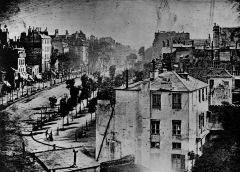
|
View of Boulevard du Temple Louis Jacques Mande Daguerre 1839
Significance: includes the earliest known candid photograph of a person. The image shows a street, but because of the over ten-minute exposure time the moving traffic does not appear. At the lower left, however, a man apparently having his boots polished, and the bootblack polishing them, were motionless enough for their images to be captured. |
|

|
Latticed window at Lacock Abbey William Fox Talbot 1835
Significance: Considered to be the world's earliest surviving camera negative. Talbot continued on to create one of the first photographic processes, the calotype.
|
|
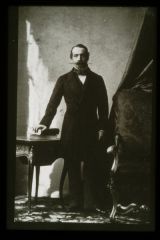
|
Carte-de-visite of Napoleon III Andre Adolphe Eugene Disderi 1859
Significance: The carte-de-visite was perfected and patented by Andre Adolphe Eugene Disderi in 1854. It was a small portrait photograph mounted on a cardboard backing the size of a visiting card. The appeal of carte-de-visite photos was propelled by a collecting urge. People collected cartes of famous people such as Napoleon III. |
|

|
Yosemite Valley from the "best general view" Carleton Emmons Watkins 1866
Significance: Shows Yosemite Valley as Watkins imagined it might have existed at the time of creation. A series of photographs of Yosemite were created in order to appeal to tourism and business opportunity due to the Gold Rush years.
|
|
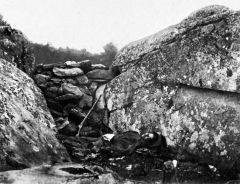
|
Home of the Rebel Sharpshooter, Gettysburg Alexander Gardner 1863
Significance: From Gardner's Photographic Sketch book of the Civil War. This image was reconfigured on the Gettysburg battlefield for the camera. Gardner had the corpse moved to a stone wall, and supported the dead man's head with a knapsack so that he faced the camera. The rifle leaned against the wall was a prop Gardner carried with him. |
|
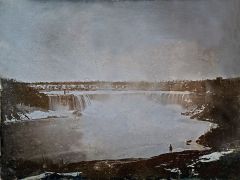
|
Niagara Hugh Lee Pattinson 1840
Significance: The first known photograph taken of Niagara falls, as well as the first known photograph taken in Canada. 27 before it had become a nation. |
|
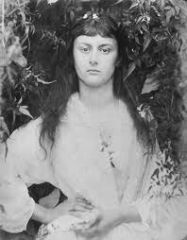
|
Pomona (Alice Liddell) Julia Margaret Cameron 1872
Significance: Alice Liddell was the girl known to inspire the children's story Alice in Wonderland. Julia Margaret Cameron was known for photographing her subjects as characters from the Bible, Greek myths, and literature. Pomona is the greek goddess of fruitful abundance. |
|

|
General Robert Potter and Staff Matthew Brady 1865 |
|

|
Desert Sandhills, near sink of Carson, NV Timothy O'Sullivan 1868
Significance: O'Sullivan used photography as a means of extension of economic power. His photographs appealed to tourism and business opportunity by taking beautiful photographs of American landscapes and the distribution of these photographs. |
|
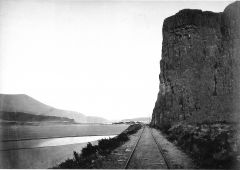
|
Cape Horn near Celilo Carleton Emmons Watkins 1867 |
|
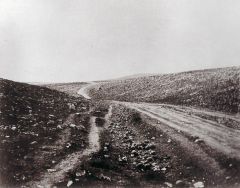
|
The Valley of the Shadow of Death Roger Fenton 1855
Significance: The Valley of Death is an area in Crimea where many British troops lost their lives in combat during the Crimean War. This photograph was taken months after the battle took place. Fenton does not show direct explicit war imagery however this image suggests terror with canon balls scattered throughout the land. |
|
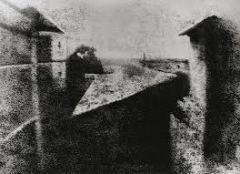
|
View from the Window at Le Gras Nicephore Niepce 1826
Significance: Considered to be the world's first permanent photograph. It was produced by using an eight hour exposure time with a camera obscura. It is a direct positive, meaning it is a print that is produced directly onto paper and cannot be multiplied. |

